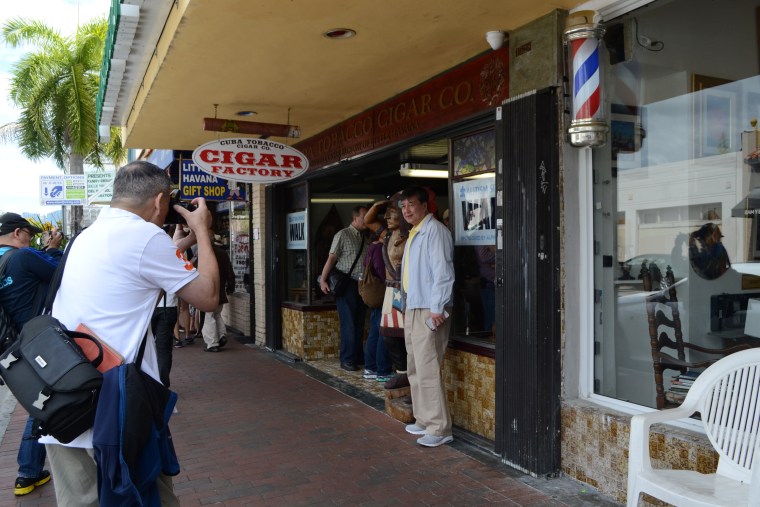MIAMI – On a recent Friday afternoon, German tourists Laura Neufert and Johannes Fuehner strolled through Miami’s famed Southwest 8th Street, often referred to as ‘Calle Ocho.’ They stopped at Máximo Gomez Park, also known as Domino Park, to gaze at the older gentlemen playing. You could hear the click clack of the dominoes being spread around the table as the players focused intently on the game and planned their next move.
“It’s nice to see how people came from Cuba and brought their culture,” said Fuehner.
The young couple is staying in downtown Miami, but they read about the neighborhood called Little Havana in a tour guide and decided to check it out.
“I find it astonishing how people speak more Spanish than English here,” Fuehner said, as a red double-decker bus stopped and unloaded a stream of tourists who dispersed between the park and other parts of the neighborhood.
Little Havana, known to Miami residents as a working class, immigrant neighborhood, has been receiving a flood of tourists for over 5 years now.
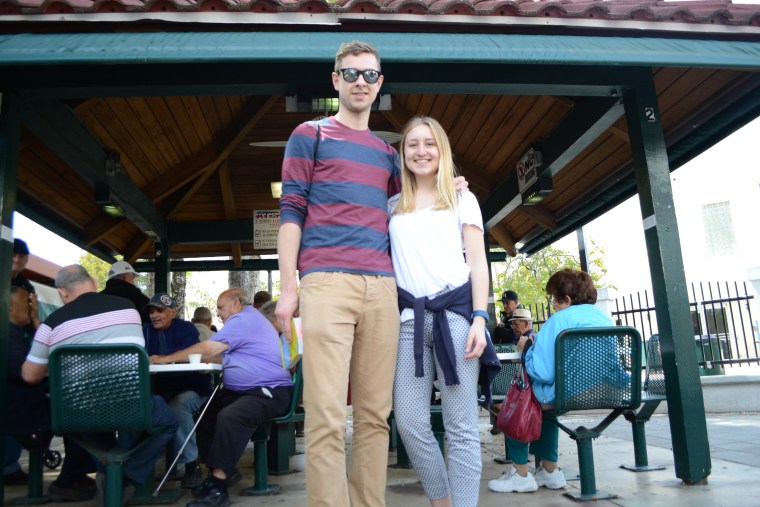
They are attracted to the neighborhood because “travelers want local authentic organic experiences,” according to Rolando Aedo, Vice President of the Greater Miami Convention and Visitor’s Bureau.
“Little Havana has become one of the most unique experiences from a tourism perspective that Miami has to offer,” he said.
When tourists began visiting the neighborhood years ago, tour buses would drop them off along Calle Ocho because they wanted to immerse themselves in the cultural experience. But there was no one to provide any guidance about the area and tourists would often resort to asking the businesses about the history. But that changed as demand grew and in 2015, the Little Havana Visitor Center was opened. Last year, an estimated 3 million tourists visited Little Havana, according to the Greater Miami Convention and Visitors Bureau.
Last year, about 3 million tourists visited Little Havana. It has been designated a national treasure.
But when the area was founded in the early 20th century, it was starkly different from what it is today. Little Havana was once a deep south neighborhood, according to Paul George, Resident Historian at the HistoryMiami museum and an author of books, including one titled “Little Havana.”
When the area was developed in the early 1900s, it was comprised of two different neighborhoods known as Riverside and Shenandoah. By the twenties Riverside and Shenandoah began to see a Jewish influx, which kept growing throughout the 30s and 40s.
But by the 1950s, the Jewish community began to move to newly established suburbs and Cubans fleeing the Fulgencio Batista dictatorship began to settle in. It was after the 1959 revolution in Cuba that the Cuban population in Miami exploded and they concentrated heavily in this area.
“By the late 60s you start to hear reference to Southwest 8th Street as ‘Calle Ocho’ and Riverside and Shenandoah as Little Havana,” said George.
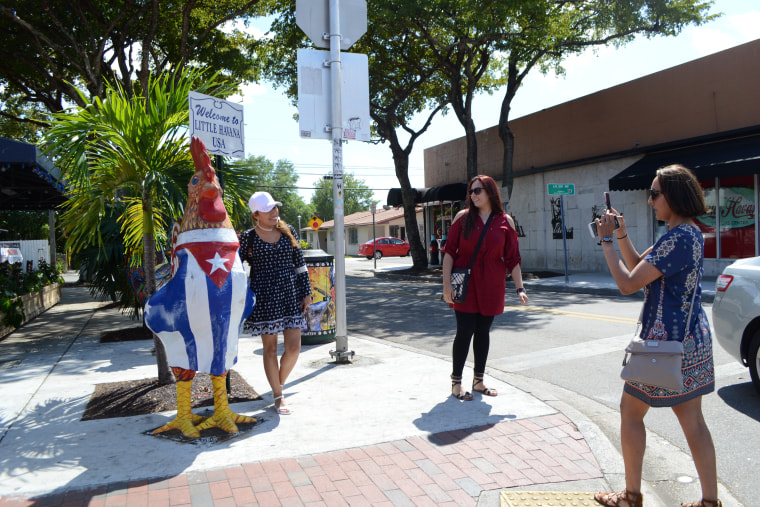
And it’s the quaint Cuban-owned businesses that for decades have lined the thoroughfare now known to many as Calle Ocho that are attracting the attention of tourists around the world.
Further placing Little Havana on the spotlight, the National Trust for Historic Preservation added the neighborhood to its list of 11 Most Endangered Places in 2015, to help protect the community while planning for the future. Earlier this year, the Trust declared it a national treasure.
Some pinpoint the beginning of tourism in the area to an art, musical and cultural event called Viernes Culturales/Cultural Fridays, which began in Little Havana in the year 2000. The event, organized by a nonprofit on the last Friday of every month, attracted 2,000 attendees at the first gathering. The idea was to promote and preserve the neighborhood’s rich history. Eventually, tourists began to trickle in.
Aedo and George agree the past five years have been significant and they attribute it to the entrepreneurs. One of the main investors in the neighborhood is Bill Fuller and his partners, who have acquired a vast amount of properties in recent years. The group’s most popular business is a bar and live music venue called Ball and Chain.
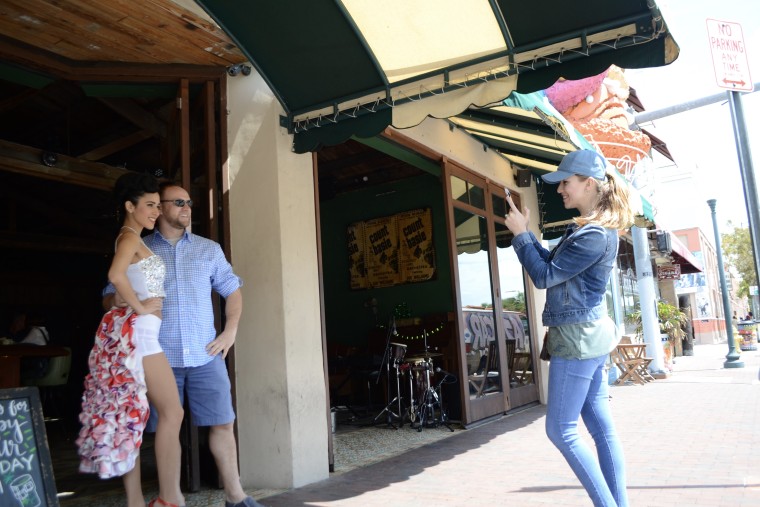
The storied bar has become a main attraction. It originally opened in 1935 and once hosted the likes of Billie Holiday, Count Basie and Chet Baker. The property went through different owners during the following decades until the mid 1990s when the building stood empty. Fuller and his partners acquired the space and reopened it in 2014, after extensive renovations.
“For me it’s a personal thing. It’s about being able to put forth the very best that we have,” Fuller said.
Fuller, a Miami native of American and Cuban ancestry, said he’s interested in preserving the rich history of the neighborhood where he spent time as a child, visiting his grandmother. When leasing properties to businesses, Fuller says they “curate” the tenants. They rent to people "who share a similar vision of preserving and protecting the heritage, the culture, and the history,” he said.
They group owns Futurama, an art gallery and creative workspace for artists. They are also renovating the historic Tower Hotel and plan to open it by the end of this year.
Adjacent to the Ball and Chain is an ice cream shop called Azucar, which always seems to have a queue going through the door. Cuban-American owner Suzanne Battle was a banker for 20 years until the Great Recession. Growing up, she and her family would have ice cream every night, so opening an ice cream shop seemed like a no brainer.
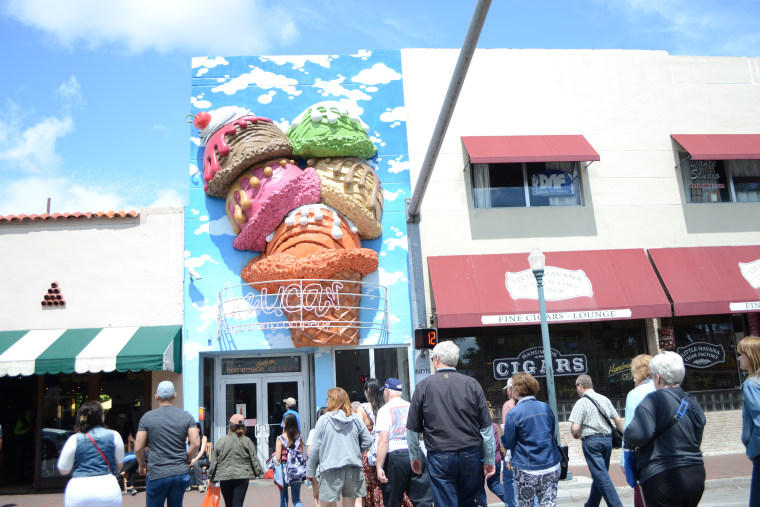
“I wanted to make it as Cuban and authentic as possible,” Battle said.
Her most popular flavor is Abuela María, which is made with guava cream cheese and the beloved galletitas María, or Maria crackers — a popular combination for Cubans.
Though these new shops have helped bring tourism to the area, many visitors are especially interested in seeing the mom-and-pop stores that have been owned by Cuban families for generations and still have the same flare they did decades ago.
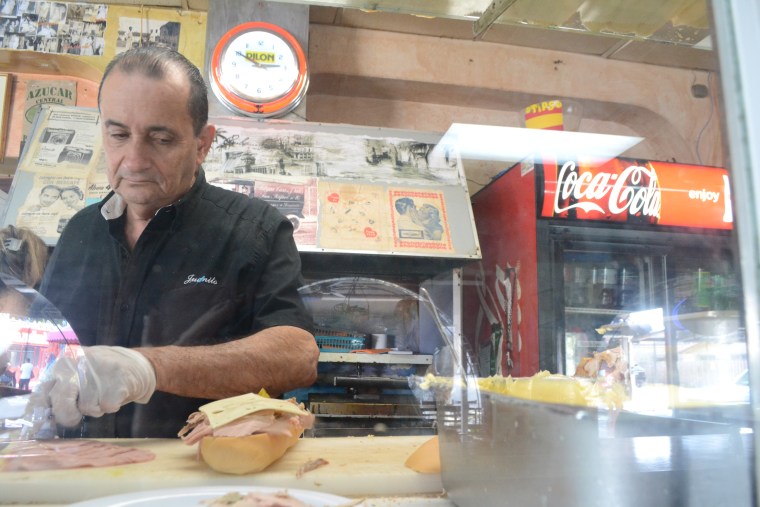
El Pub restaurant, on a corner that sees a lot of traffic, has been open for at least 50 years and is owned by the same Cuban family for over two decades. Ten years ago you would only find locals eating at this traditional eatery.
“In the past three years there have been big changes,” said Marina Rivera, who runs the restaurant with her brother since their father passed away two years ago.
“Tours come inside and talk about the food and how to make it,” she said. In the middle of the restaurant, on a raised platform you can often find master sandwich maker Juan Robaina, who will be putting together Cuban sandwiches and heating them up in the ‘plancha’ or sandwich press.
“Every week, investors come by wanting to buy,” Rivera said. But she has been reluctant to sell the restaurant her parents worked so hard to open.
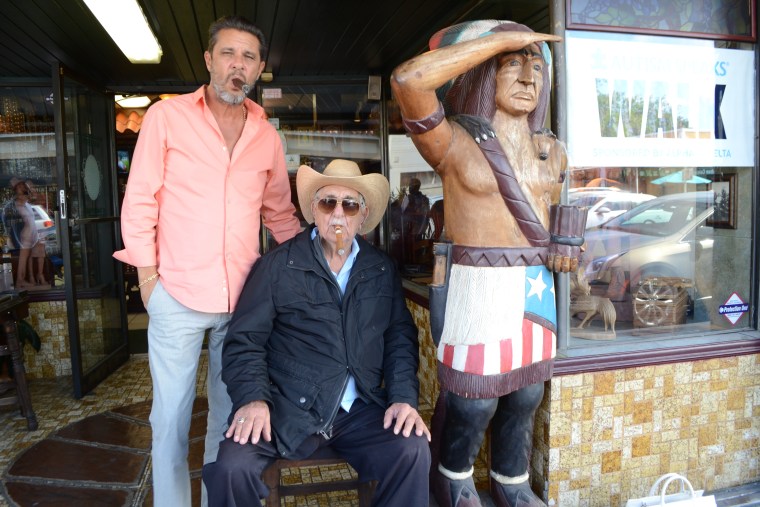
Next door to El Pub is Cuba Tobacco Cigar Co. — another business that has been in Little Havana for decades. Inside the boutique cigar shop and factory, cigars are hand rolled by Cuban cigar makers, who have their own technique.
Peter Bello, who runs the business with his family, said his great-grandfather originally started the business in the province of Las Villas in Cuba over 100 years ago. After the 1959 Cuban revolution, the family assets were confiscated. The family exiled in the U.S. and eventually reopened their business in Little Havana. Cuba Tobacco Cigar Co. now has factories in Little Havana, Honduras and Nicaragua.
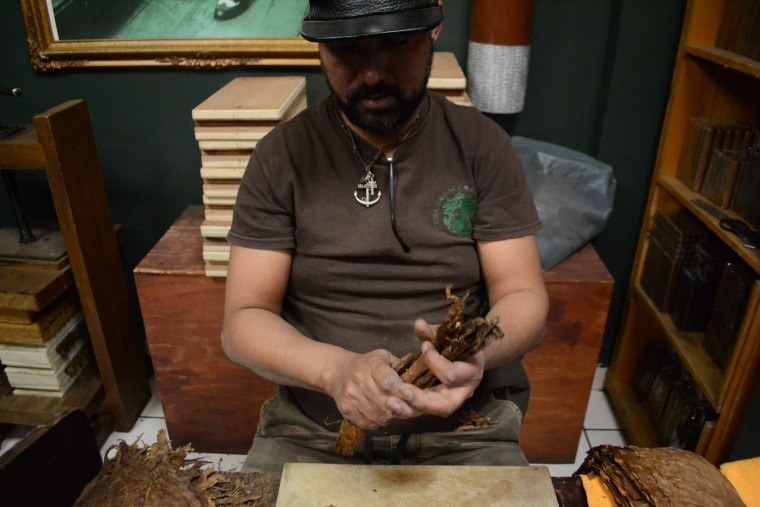
These family-run shops that have been around for generations along with Cultural Fridays are having a lasting impact on Miami’s tourism industry. Many Miami residents are not even aware of the tourism boom going on in the Little Havana neighborhood.
People travel thousands of miles for that splash of paradise that many Miami residents take for granted, according to Aedo. For many Americans, a cultural experience is a car, bus ride or plane ride away.
“Imagine how exciting it is for tourists that can come from practically any place in the U.S. and have that extremely tropical, Caribbean, Latin experience and not need a passport,” Aedo said.
